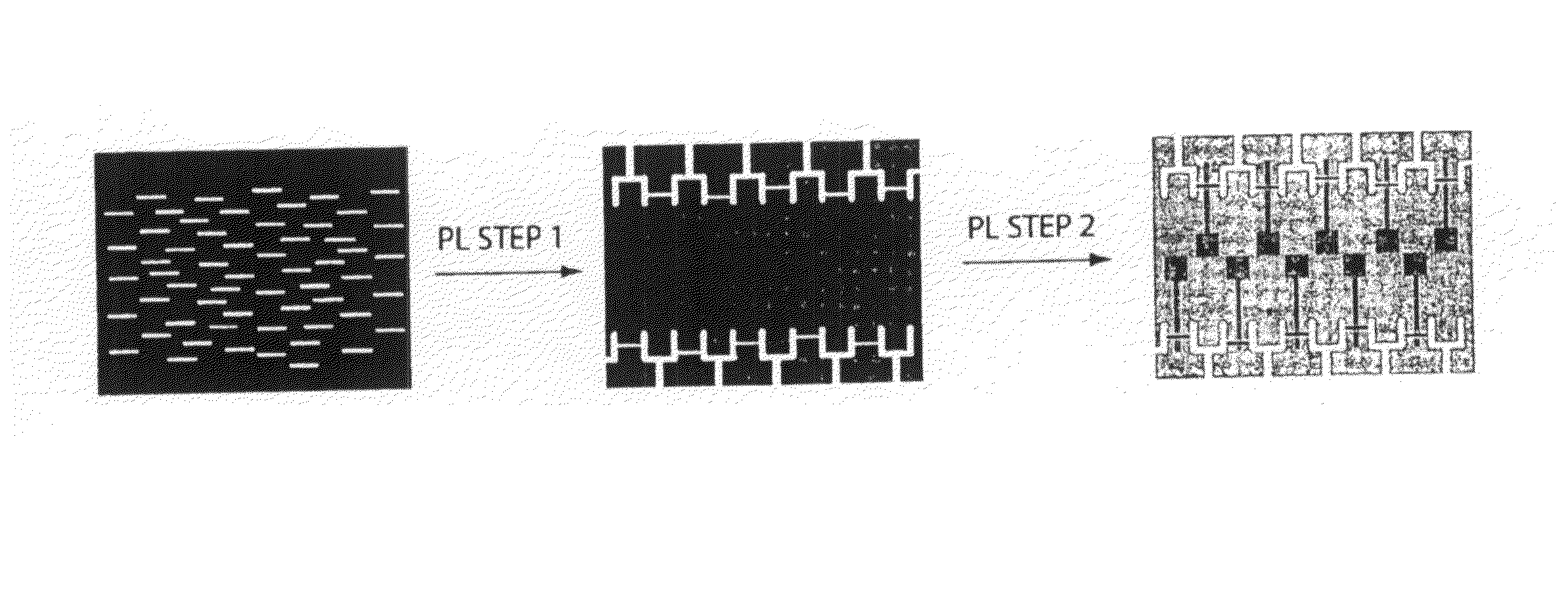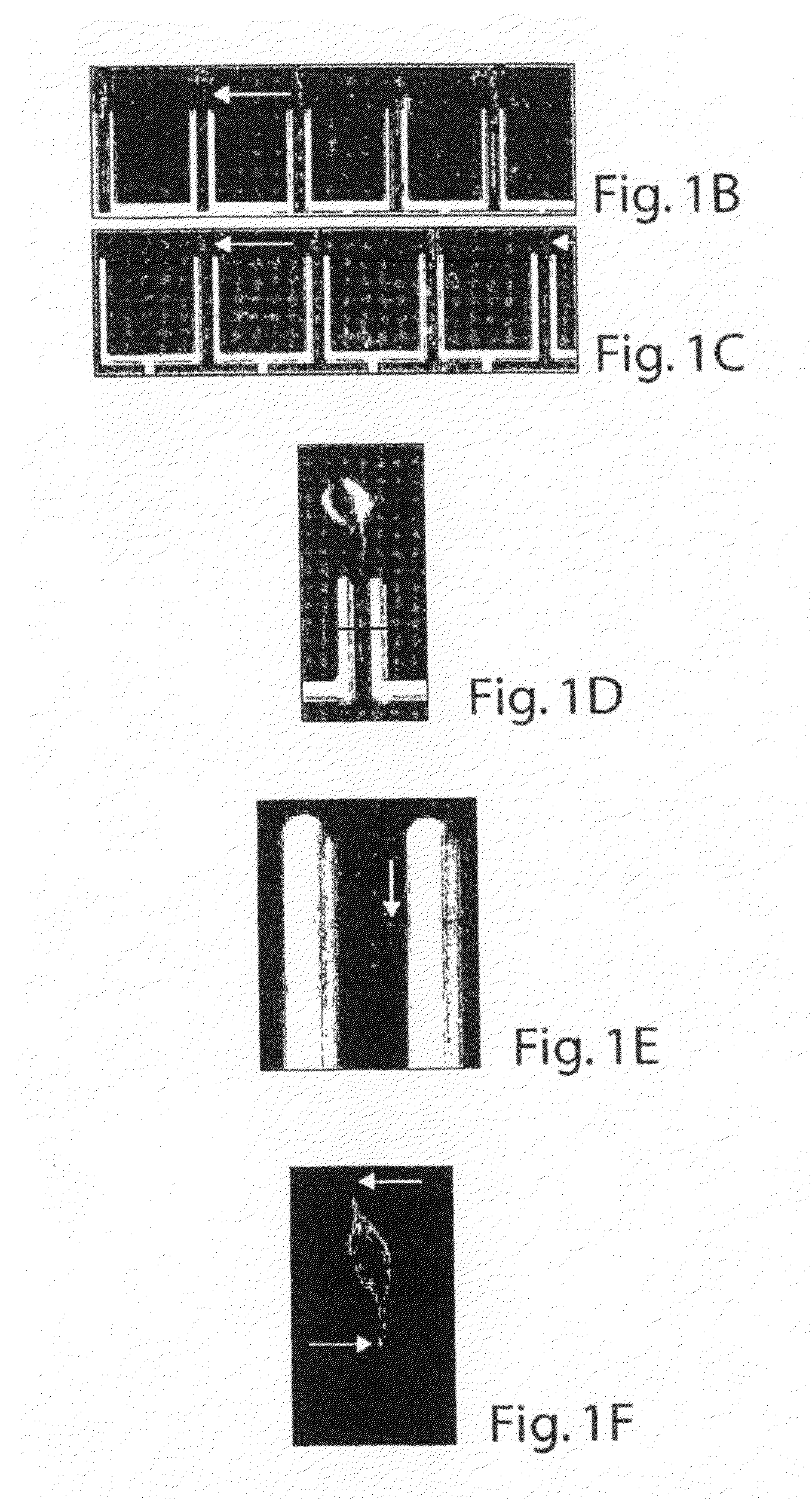Nanobioelectronics
a technology of nano-electronics and micro-electronics, applied in the field of nano-electronics, can solve the problems of difficult multiplexing and lack of resolution necessary to provide fine-grain information at the level of individual cells
- Summary
- Abstract
- Description
- Claims
- Application Information
AI Technical Summary
Benefits of technology
Problems solved by technology
Method used
Image
Examples
example 1
[0082]The interface between nanoscale semiconductors and biological systems represents a powerful means for molecular-scale communication between these two distinct yet complementary components of information processing systems. This example illustrates the assembly and electrical properties of nanowire-based device arrays integrated with mammalian neurons. Discrete hybrid structures enable neuronal recording and stimulation at the axon, dendrite, or soma with high sensitivity and spatial resolution. Aligned arrays of these electronic nanostructures are used to measure the speed and shape evolution of action potentials as well as to interact with a single cell as multiple inputs and outputs. Additionally, we have demonstrated the assembly of hybrid n- and p-type structures enabling the generation of bipolar signals that could form the basis of logic gates and other integrated neuron-based computing structures. The flexible assembly of arrays of these structures creating tens of inpu...
example 2
[0083]This example illustrates the preparation of certain nanowire / neuron devices, according to one embodiment of the invention. FIG. 1A is a general schematic for the preparation and assembly of oriented p- and / or n-type silicon nanowires in an aligned neuron / nanodevice array, with interconnection into well-defined FET device array structures, patterning of polylysine as an adhesion and growth factor to define neuron cell growth with respect to the device elements, and neuron growth under standard conditions (discussed in detail below). This approach is flexible allowing for variations in the addressable nanowire device separations down to at least 100 nm and device array geometry, incorporation of electronically distinct p- and n-type elements in well-defined positions, and / or variation in the number and spatial location of the hybrid nanowire / neuron junctions or synapses with respect to the cell body and neurite projections. Moreover, new chips incorporating such changes can be r...
example 3
[0091]In this example, nanowire / soma and nanowire / dendrite hybrid structures were also investigated and found to exhibit excellent electrical communication. Intracellular stimulation of action potential spikes in the soma yielded correlated conductance peaks measured by the nanowire in a nanowire / soma structure (FIGS. 7A-7D). These figures show the silicon nanowire device before (FIG. 7A) and after (FIG. 7B) deposition and growth of a cortical neuron with the cell body over the nanowire device; the arrows highlight the positions of the nanowire and cell body, respectively. Also shown are intracellular (FIG. 7C) and nanowire (FIG. 7D) electrical responses of the neuron after intracellular current injection (arrows; 15 msec, 0.6 nA pulse).
[0092]The shape and width of the conductance peak (FIGS. 7E-7F) were similar to those determined from nanowire / axon structures. FIG. 7E is a graph showing representative electrical signals detected by nanowire devices for individual soma-nanowire con...
PUM
 Login to View More
Login to View More Abstract
Description
Claims
Application Information
 Login to View More
Login to View More - R&D
- Intellectual Property
- Life Sciences
- Materials
- Tech Scout
- Unparalleled Data Quality
- Higher Quality Content
- 60% Fewer Hallucinations
Browse by: Latest US Patents, China's latest patents, Technical Efficacy Thesaurus, Application Domain, Technology Topic, Popular Technical Reports.
© 2025 PatSnap. All rights reserved.Legal|Privacy policy|Modern Slavery Act Transparency Statement|Sitemap|About US| Contact US: help@patsnap.com



